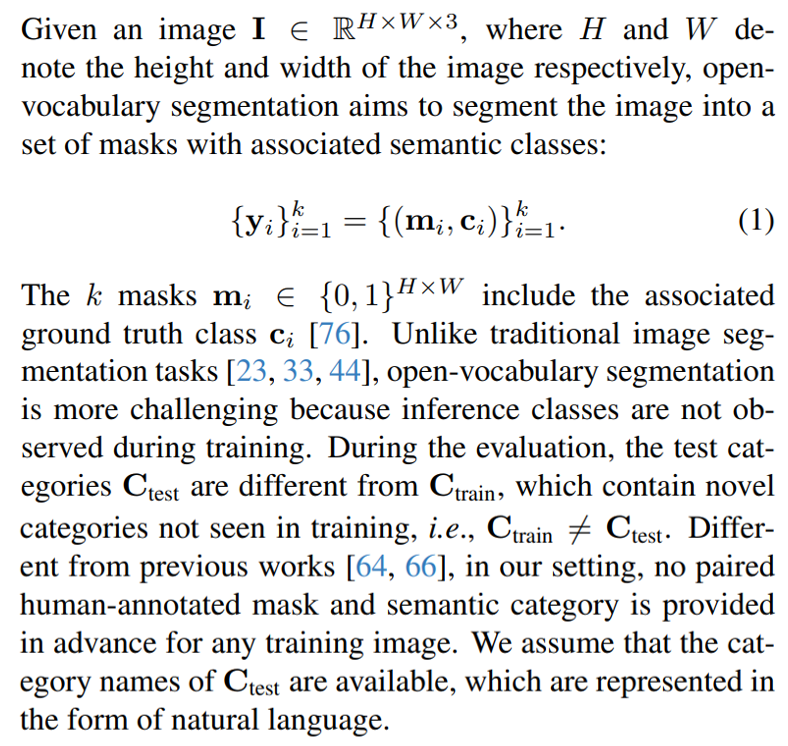This content originally appeared on HackerNoon and was authored by Segmentation
:::info Authors:
(1) Zhaoqing Wang, The University of Sydney and AI2Robotics;
(2) Xiaobo Xia, The University of Sydney;
(3) Ziye Chen, The University of Melbourne;
(4) Xiao He, AI2Robotics;
(5) Yandong Guo, AI2Robotics;
(6) Mingming Gong, The University of Melbourne and Mohamed bin Zayed University of Artificial Intelligence;
(7) Tongliang Liu, The University of Sydney.
:::
Table of Links
3. Method and 3.1. Problem definition
3.2. Baseline and 3.3. Uni-OVSeg framework
4. Experiments
6. Broader impacts and References
3. Method
In this section, we first define the problem of openvocabulary segmentation in Sec. 3.1. We then introduce a straightforward baseline in Sec. 3.2. Finally, we present our proposed Uni-OVSeg framework in Sec. 3.3, including an overview, mask generation, mask-text alignment, and open-vocabulary inference.
3.1. Problem definition

\
:::info This paper is available on arxiv under CC BY 4.0 DEED license.
:::
\
This content originally appeared on HackerNoon and was authored by Segmentation
Segmentation | Sciencx (2024-11-12T22:26:37+00:00) Defining Open-Vocabulary Segmentation: Problem Setup, Baseline, and the Uni-OVSeg Framework. Retrieved from https://www.scien.cx/2024/11/12/defining-open-vocabulary-segmentation-problem-setup-baseline-and-the-uni-ovseg-framework/
Please log in to upload a file.
There are no updates yet.
Click the Upload button above to add an update.
